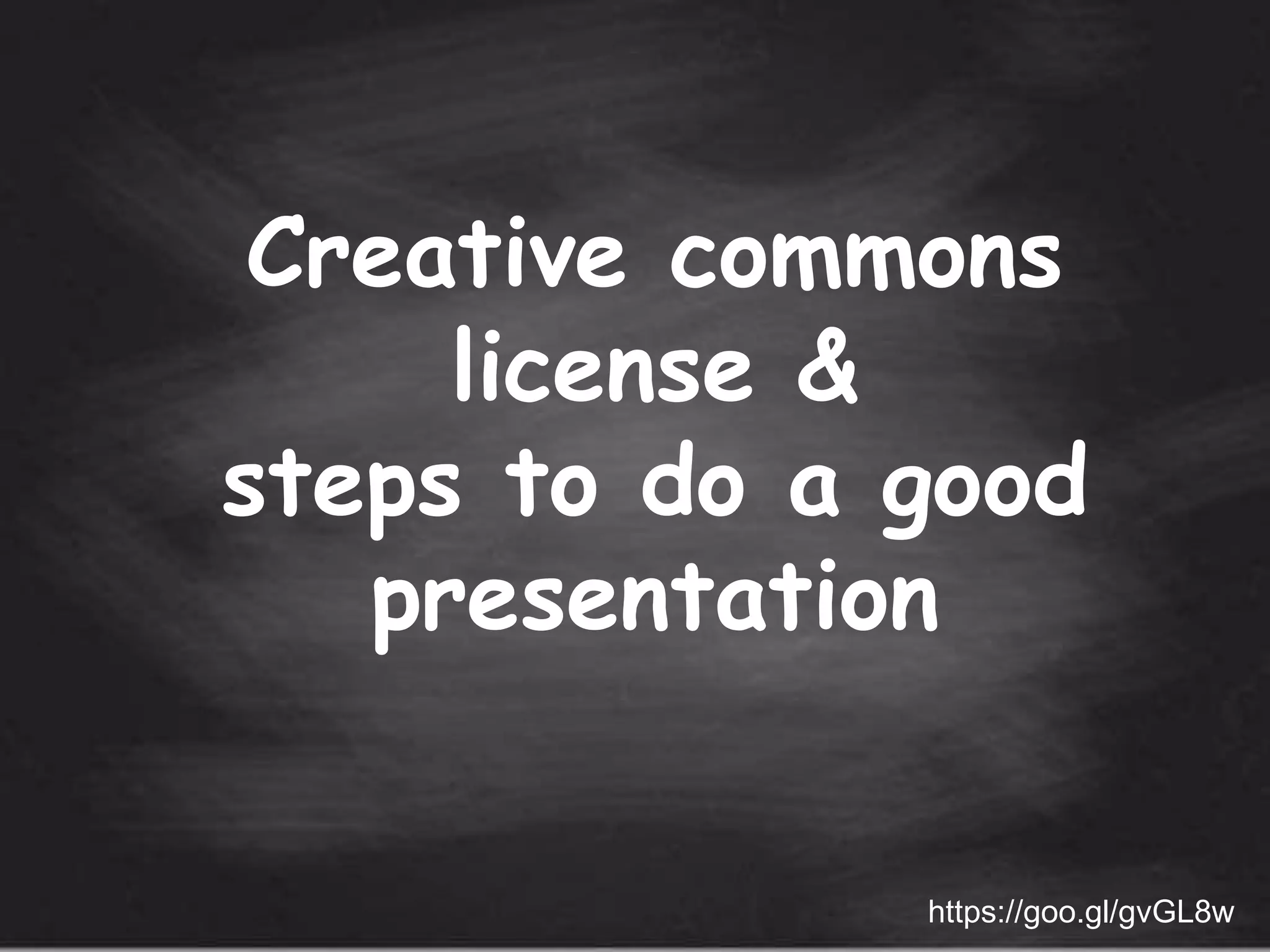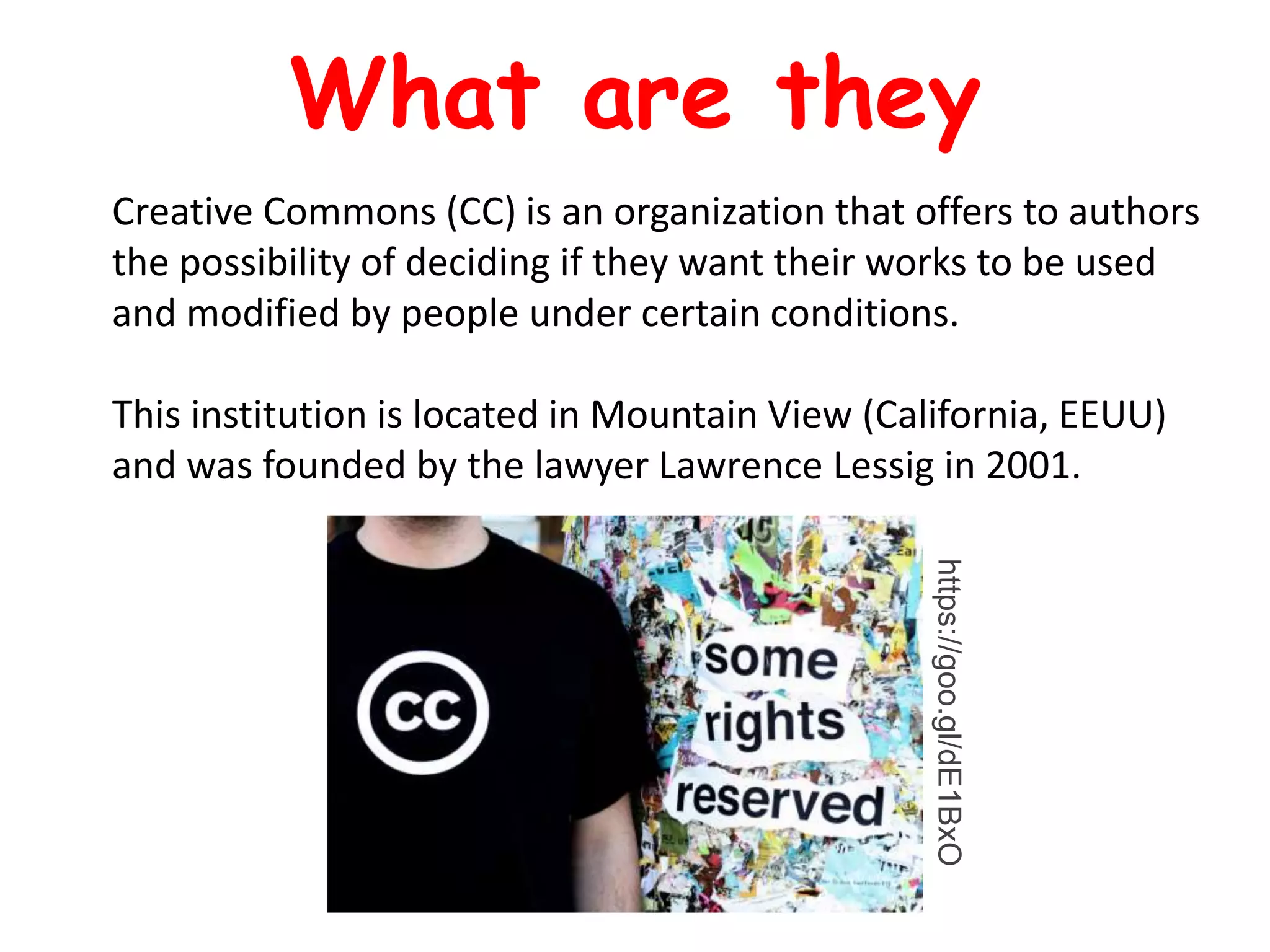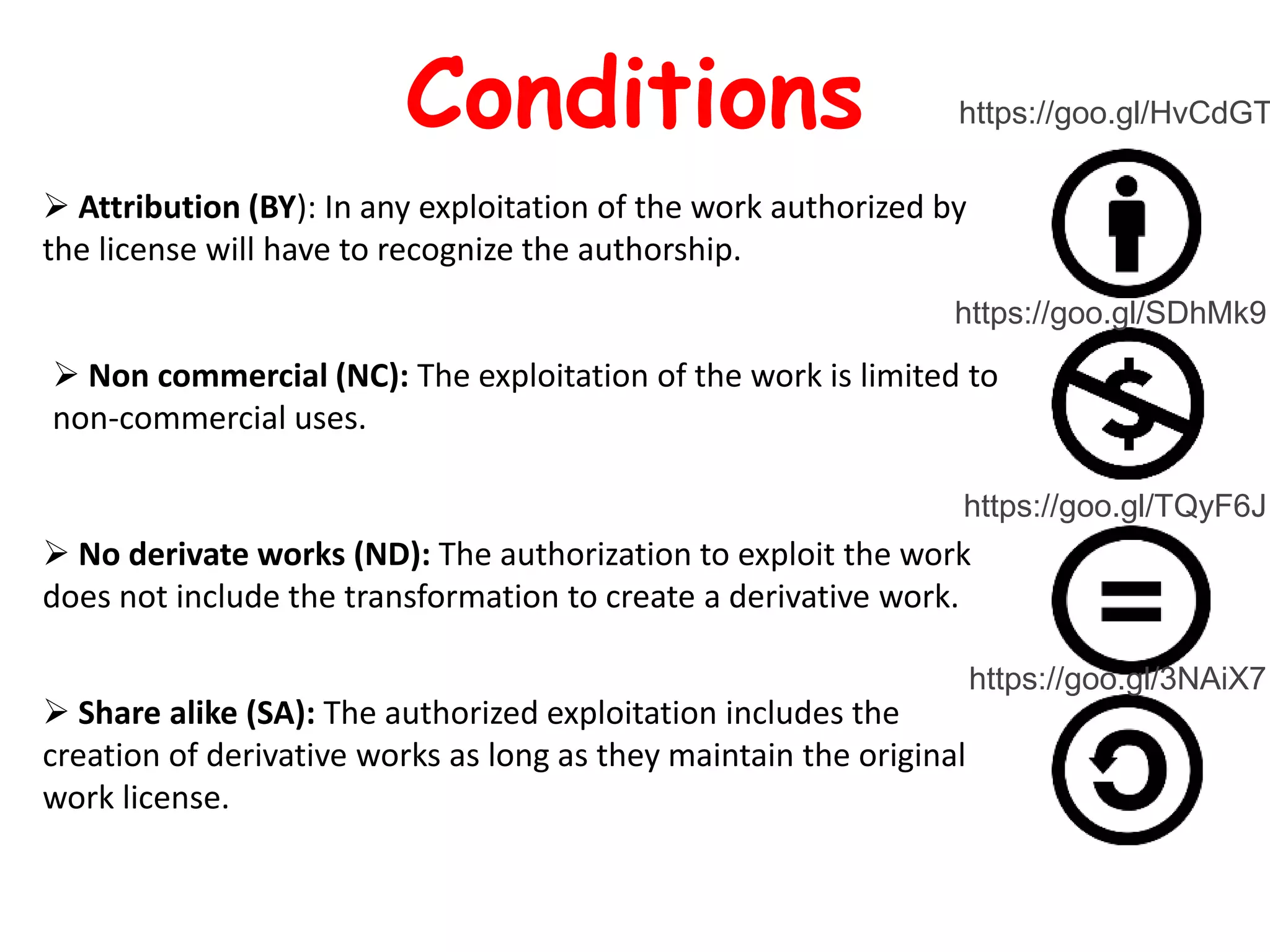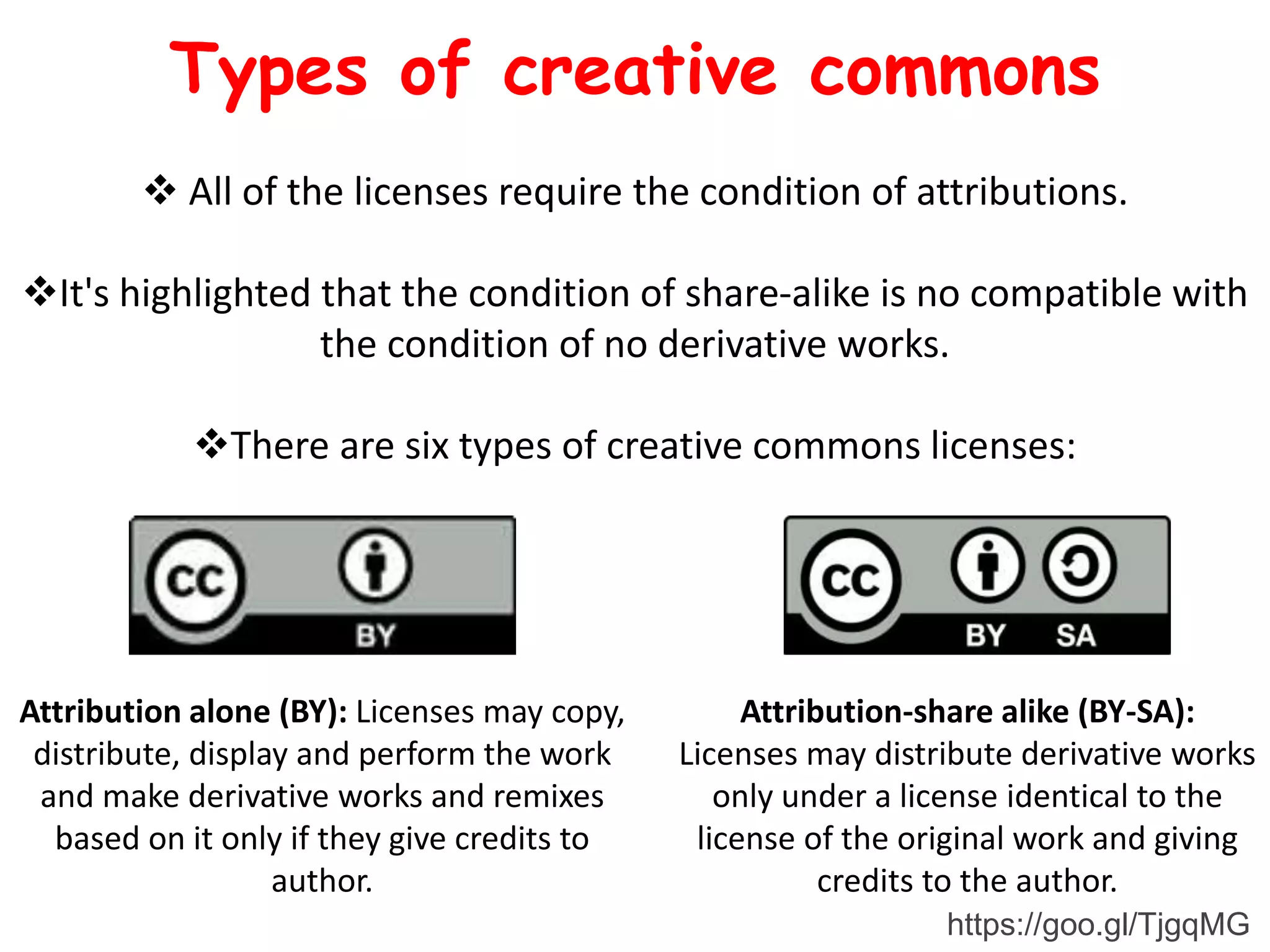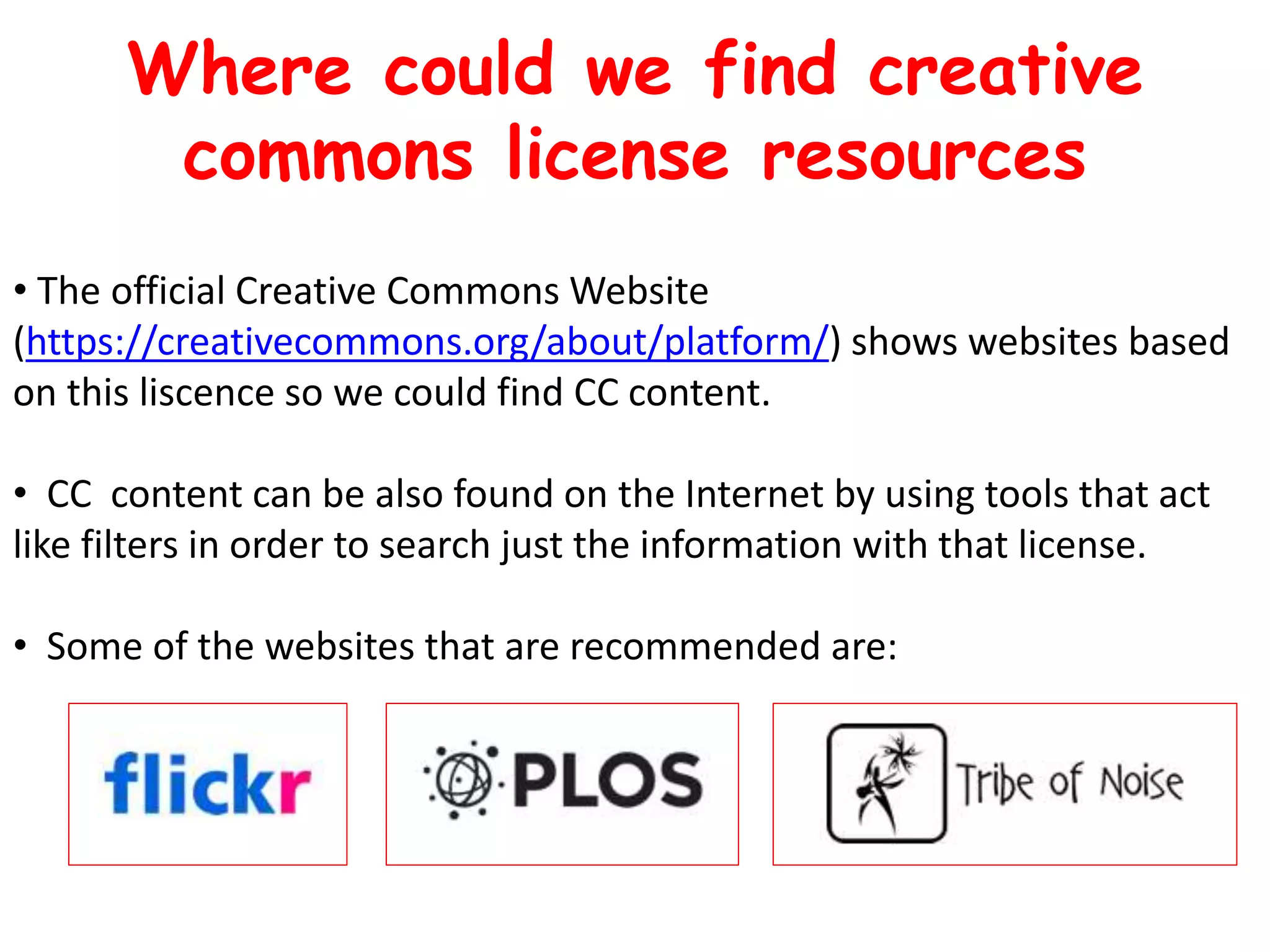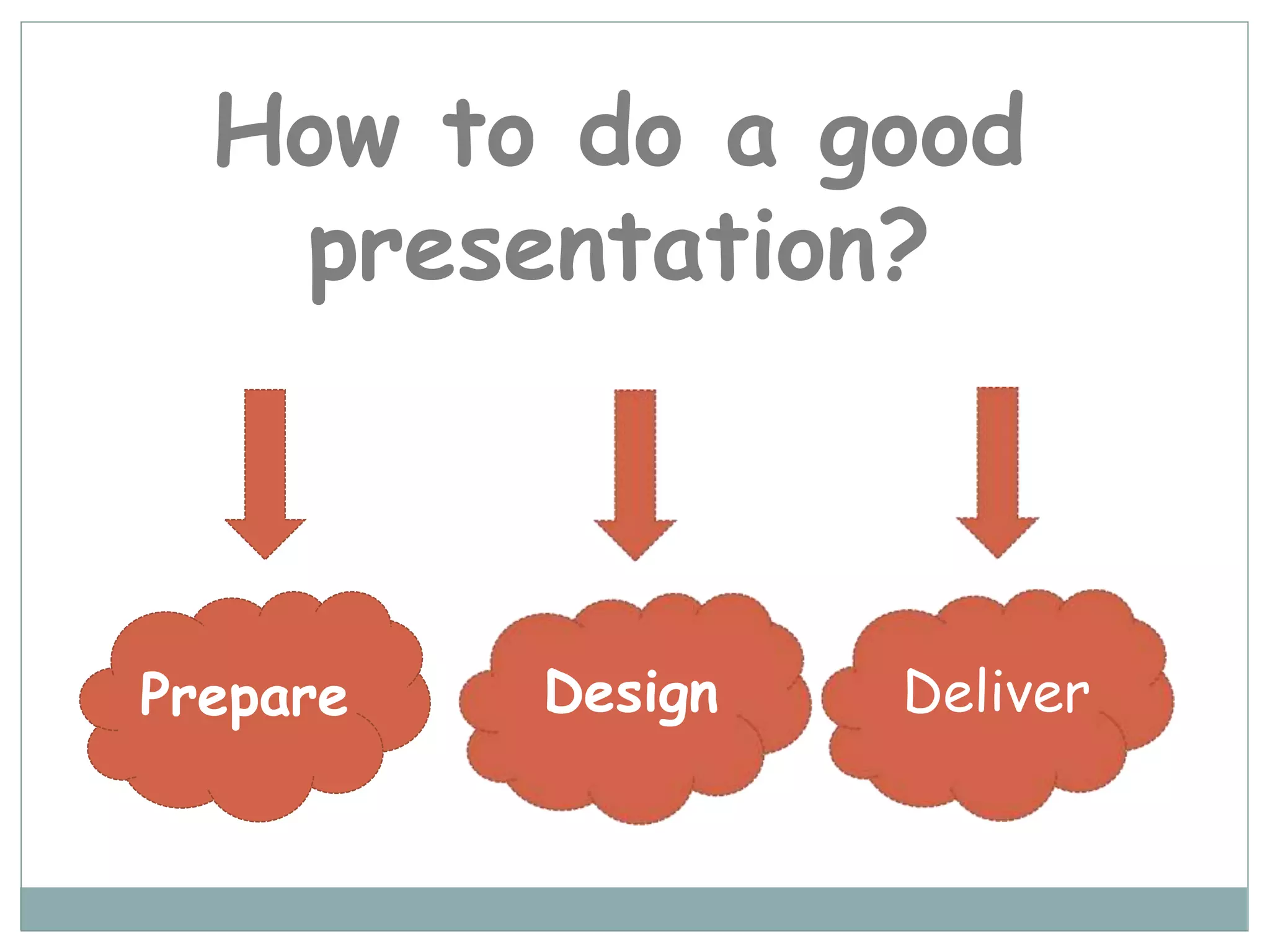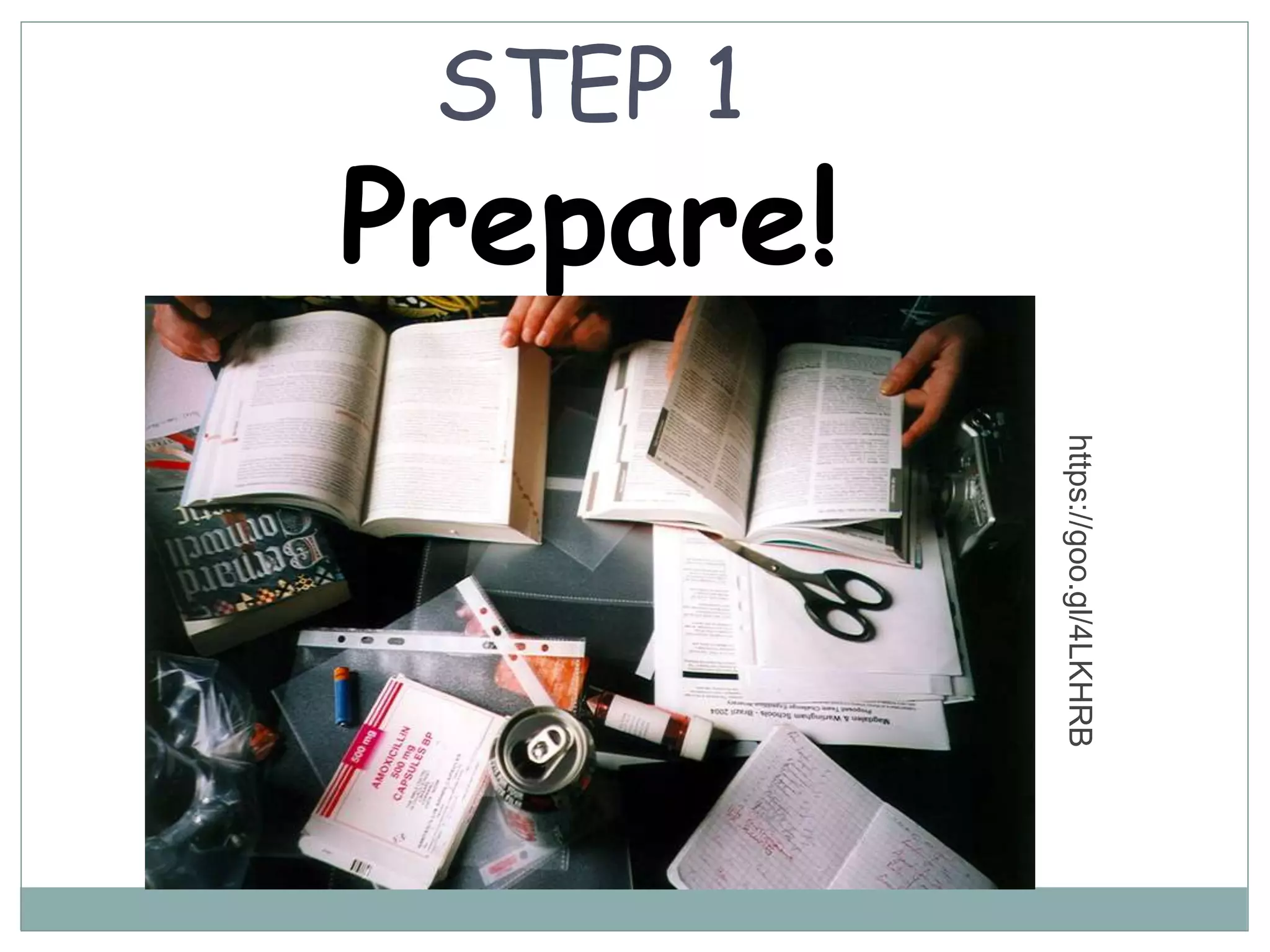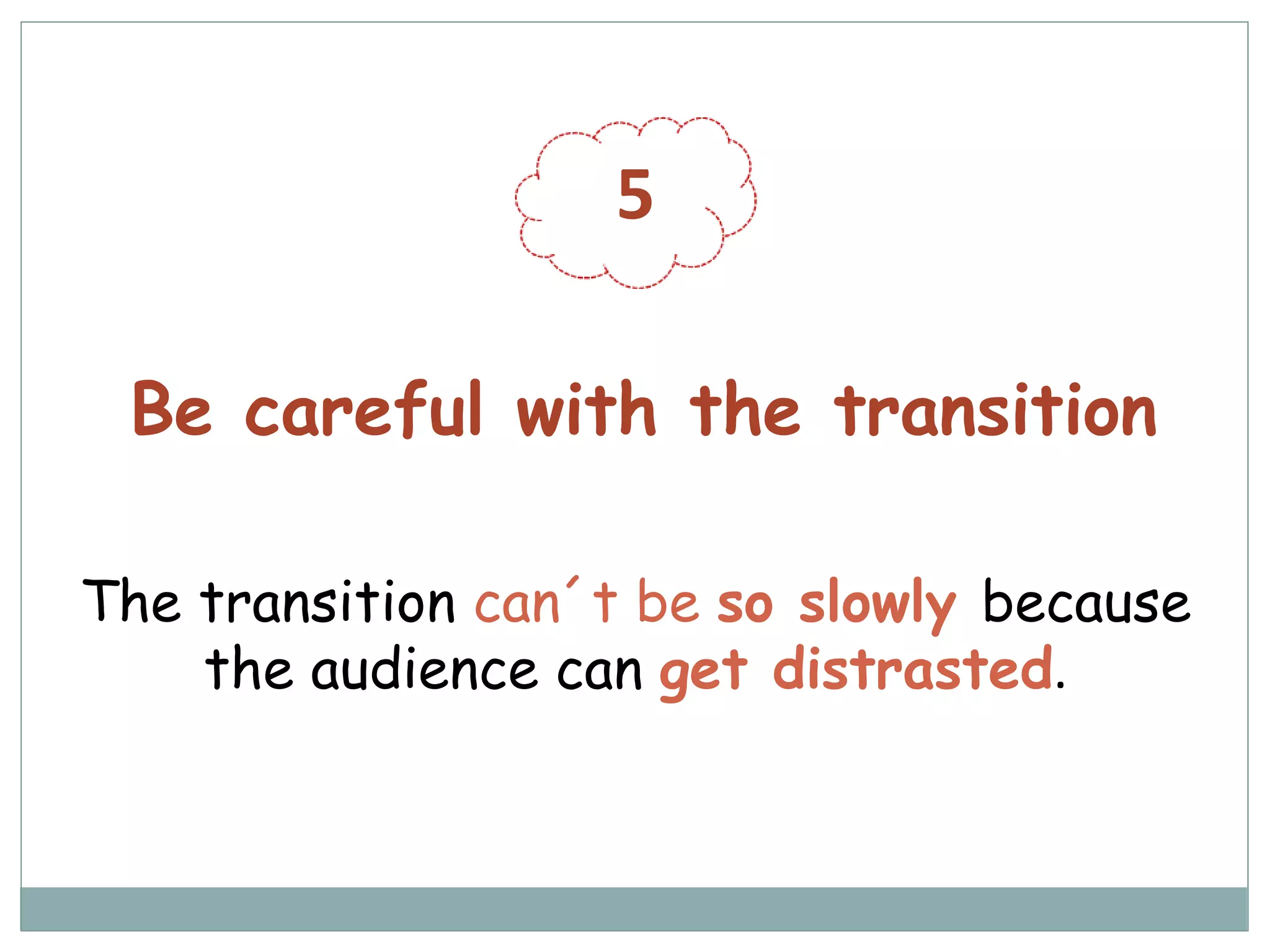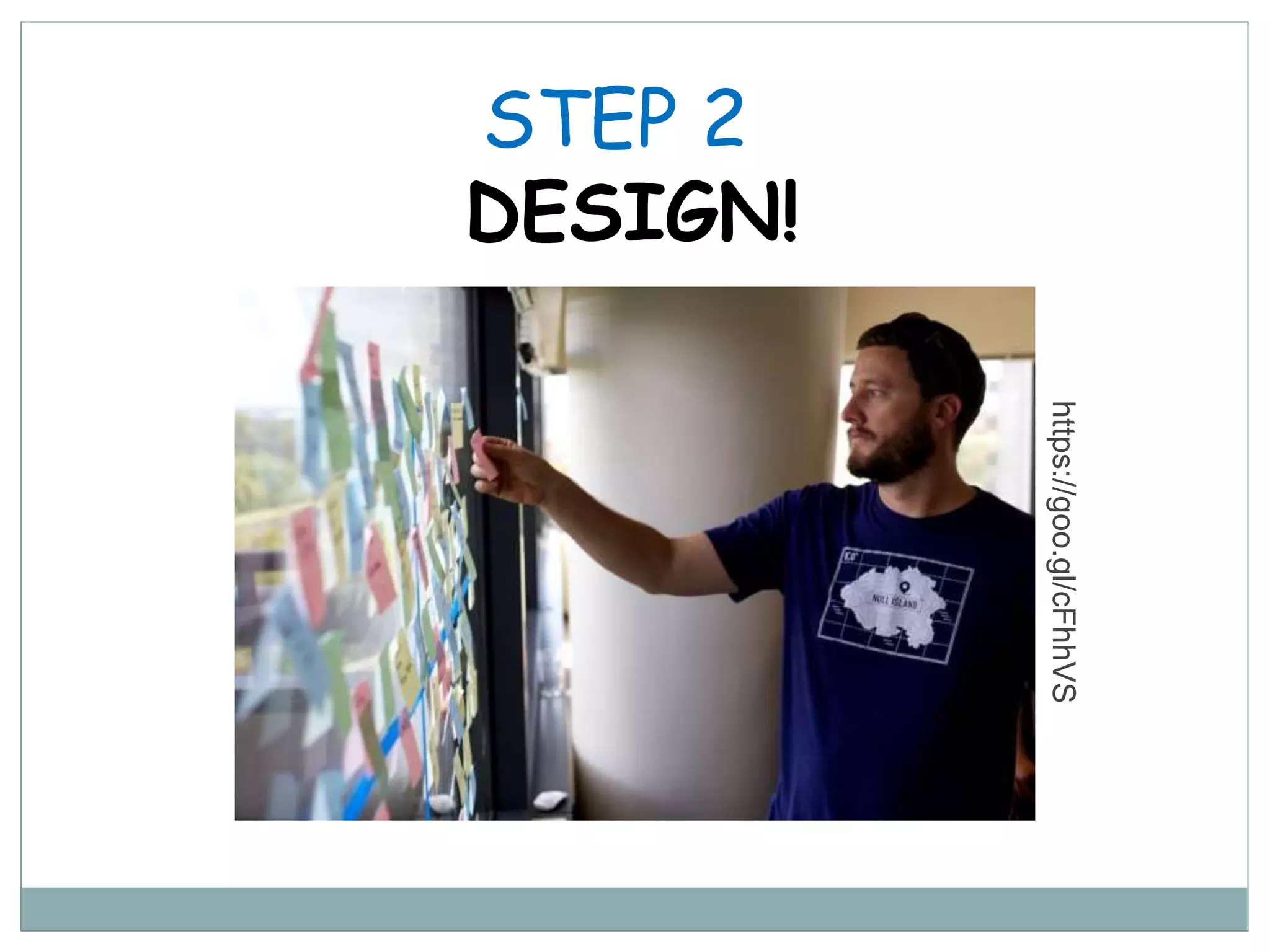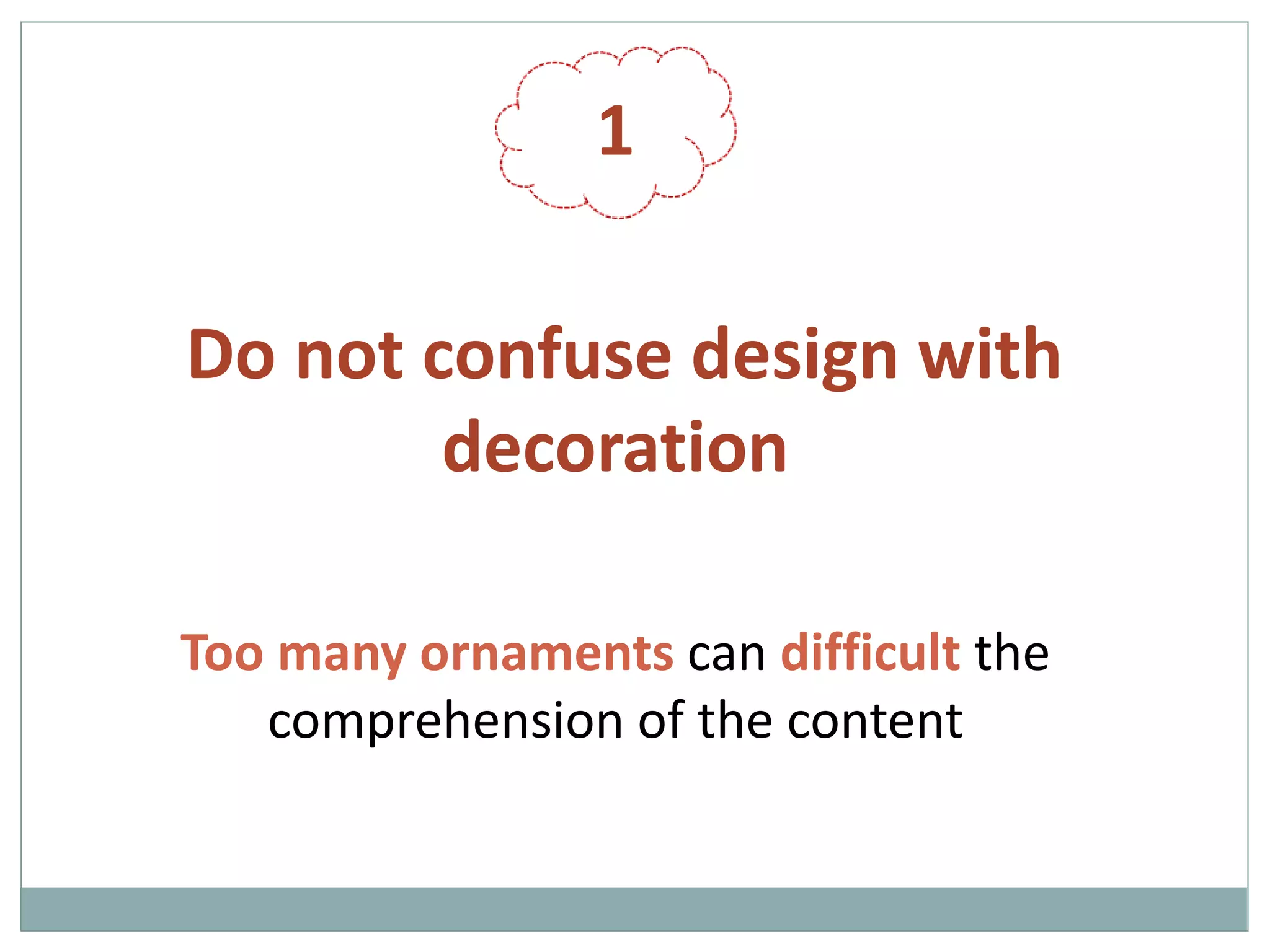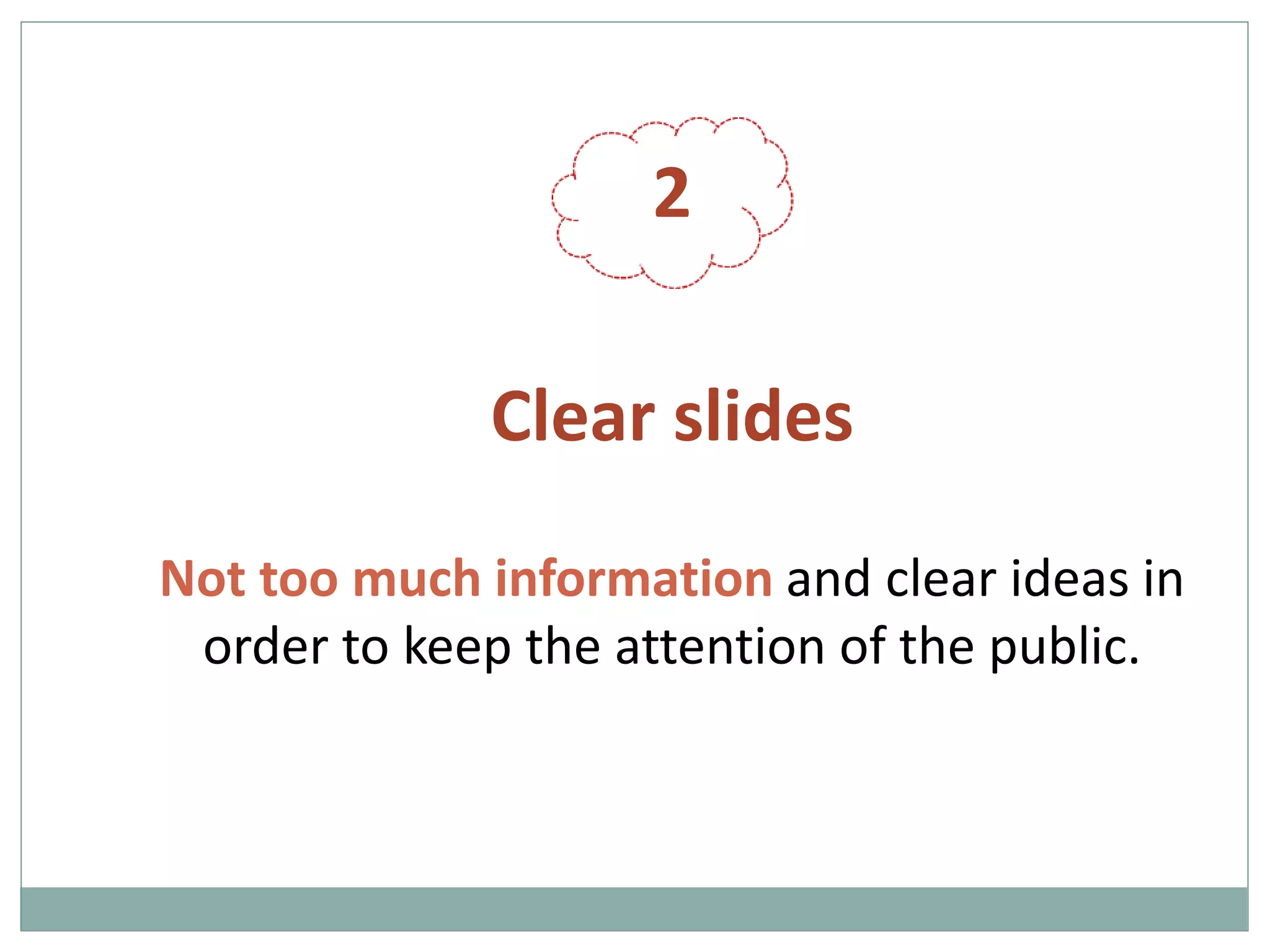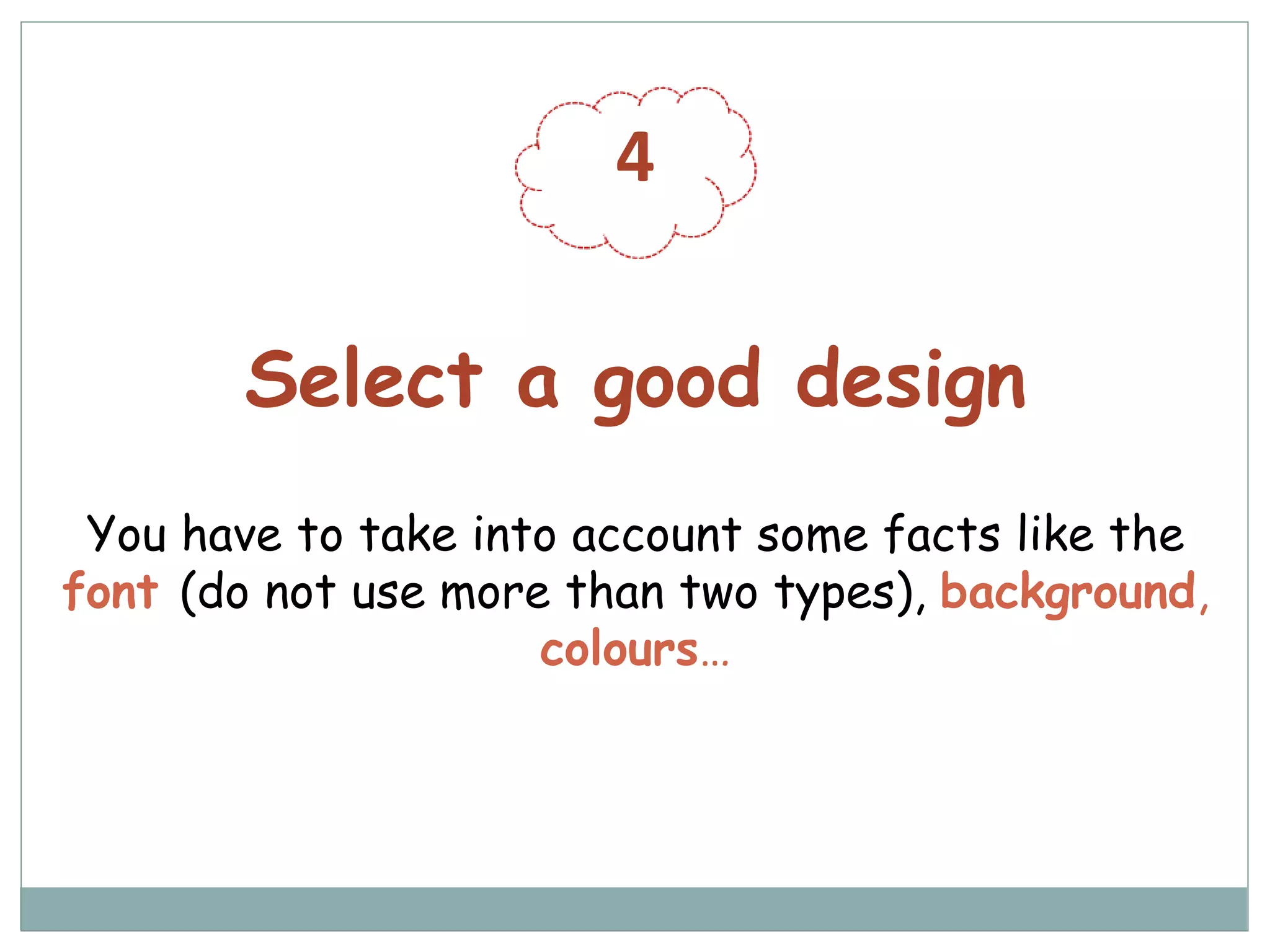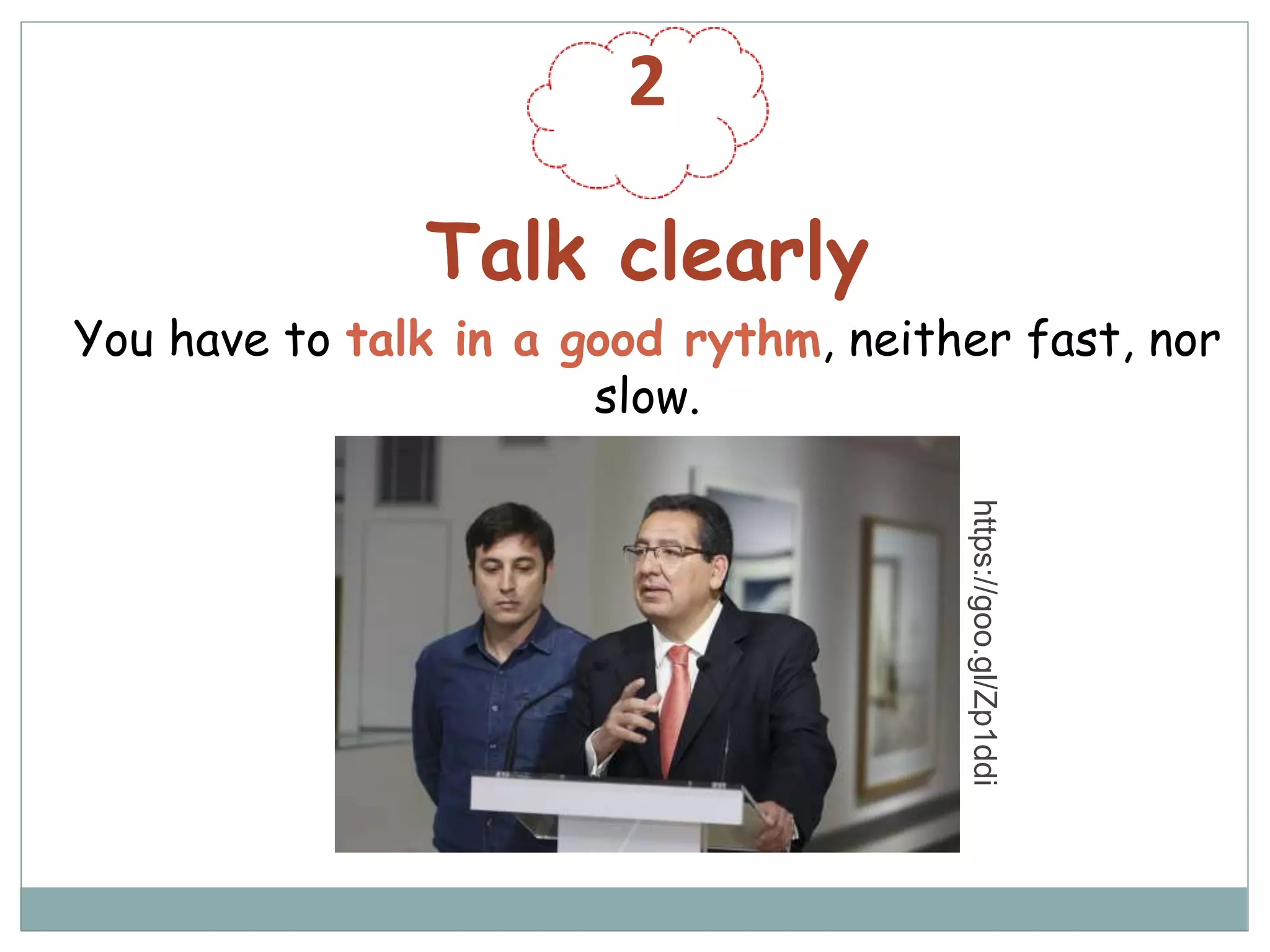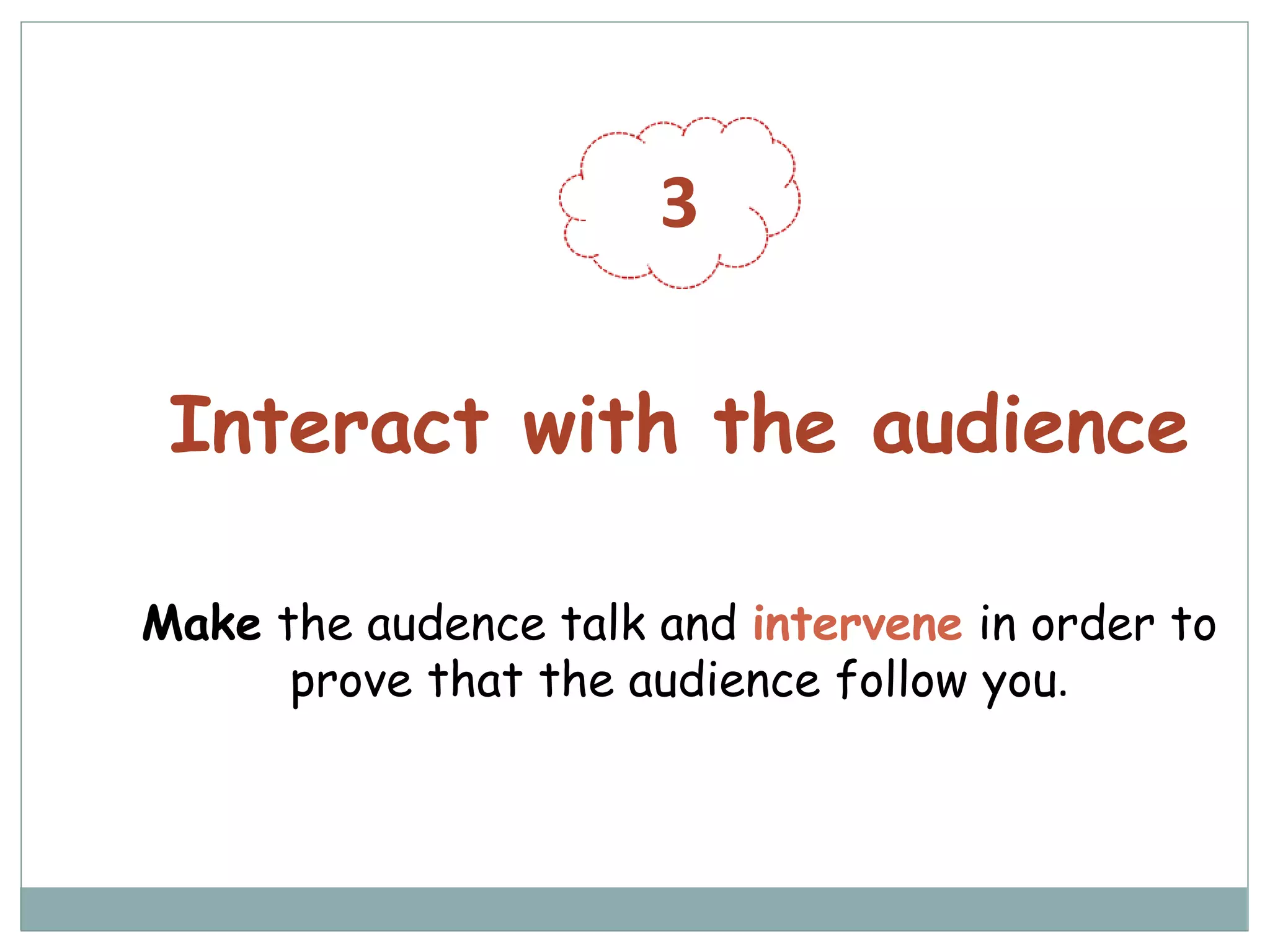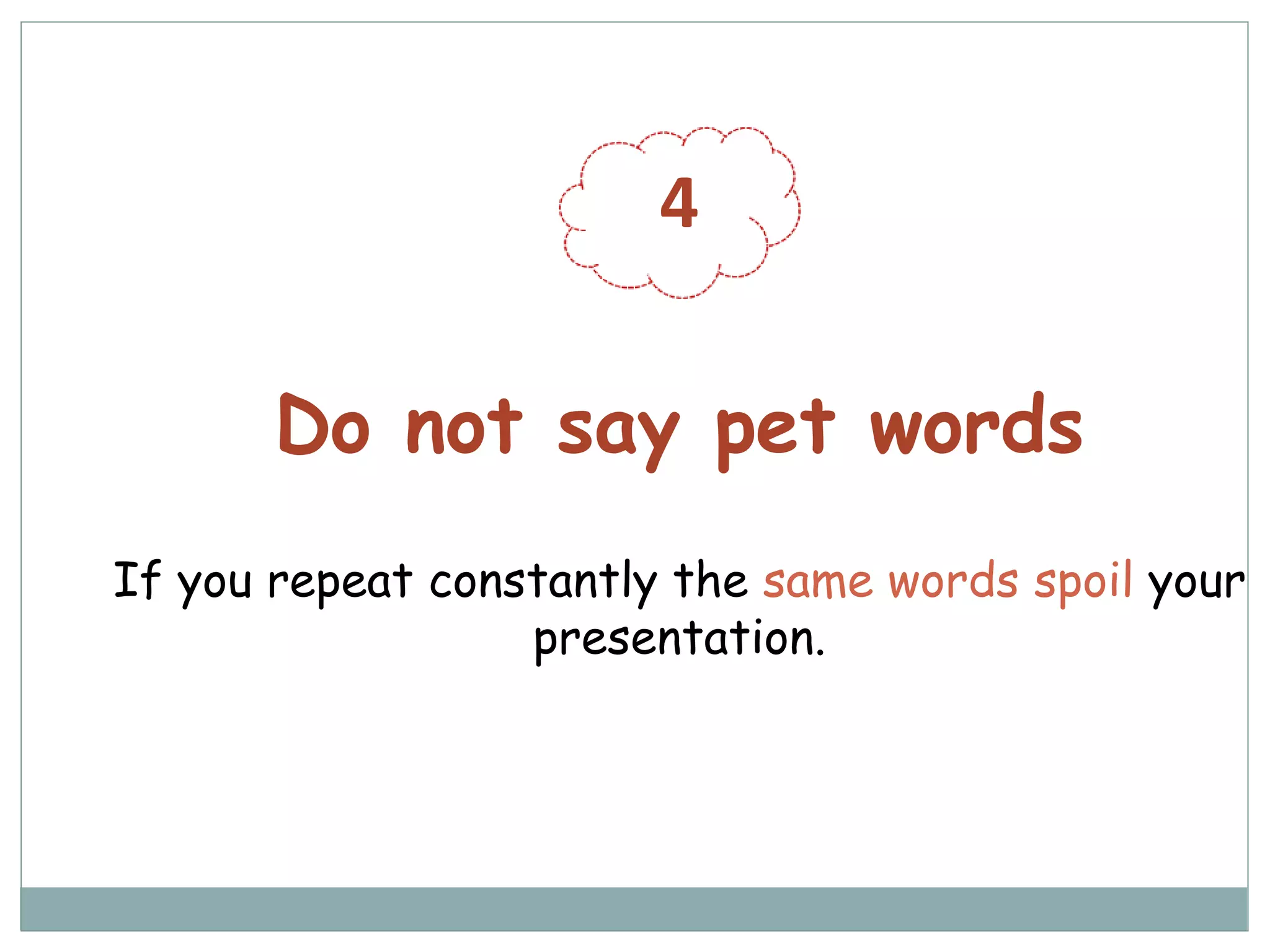The document discusses Creative Commons (CC) licenses, which allow authors to choose how their works can be used and modified by others. CC offers several types of licenses that vary based on whether derivatives can be made, the work can be used commercially, and whether derivatives must also be shared under the same license. The benefits of CC licenses include shared benefits between authors and users, increased chances of attribution, and helping to combat piracy. The document also provides steps for converting a copyrighted work to CC and how to give a good presentation, including preparing, designing clear slides with visual content, and delivering engagingly to the audience.
